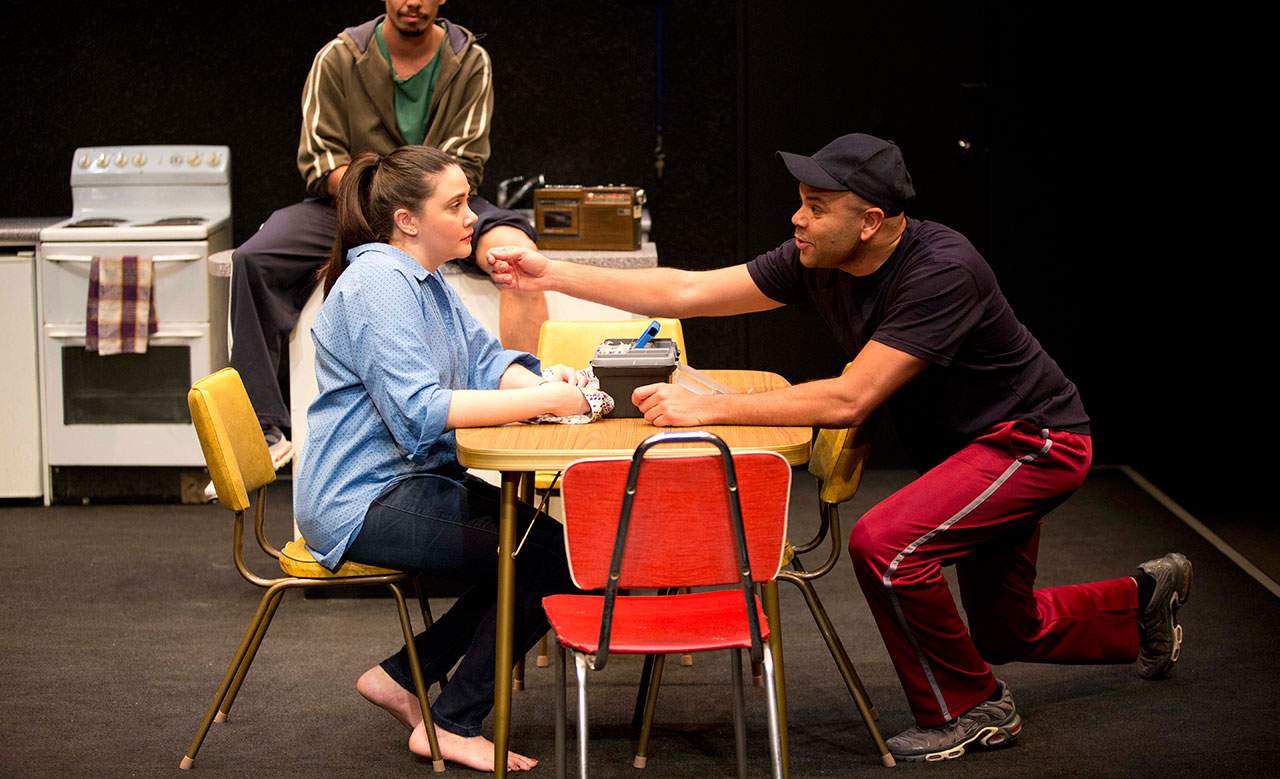Battle of Waterloo - Sydney Theatre Company
Tennessee Williams-esque cutting and funny drama, within the very Sydney setting of Waterloo's housing commission flats.
Overview
Battle of Waterloo, directed by Sarah Goodes for the Sydney Theatre Company, is the impressive debut of writer Kylie Coolwell. With a great cast and skilfully constructed dialogue, this is a vibrant story of the struggles of an Indigenous family and a celebration of the tight-knit community of Sydney’s Waterloo.
When Ray (Luke Carroll) returns home after three years in prison, he is full of promises for his friends and family about turning his life around. But this is just another distraction for Cassie (Shari Sebbens), his partner, who is agonisingly close to finishing a course in fashion design and is already juggling a number of problems at home, not least of which is her sister Sissy (Shareena Clanton), who is addicted to drugs and spinning rapidly out of control. Despite Ray’s determination to "dream up a world [he and Cassie] never had until now", the dream gets harder and further away, and old habits begin to creep in.
The play is set in Waterloo’s James Cook and Joseph Banks Towers, and designer Renee Mulder captures both the intimate setting of Auntie Mavis’s flat and a sense of the broader community, with balconies and a grass strip the backdrop to the simply furnished kitchen and bedrooms.
Coolwell has a deft and humorous touch with the larger group scenes, choosing just the right moment for each character to chime in. The ensemble is fantastic, particularly in numbers; the house is a hive when the family comes together, discussions becoming arguments before somebody recognises a classic playing on the radio, which sparks off a dance. All of the actors deliver such physically grounded performances that the noise and energy they generate is beautiful and infectious.
Apparently one of Coolwell’s major influences while writing the play was Tennessee Williams and it shows. The air is thick with dialogue that is frank, cutting and funny, a cacophony of voices teasing and posturing, denying and verifying certain parts of a story. It is matriarch Auntie Mavis (Roxanne McDonald) who usually has the last word, though, her disapproval cutting through the ruckus as she sits at the table playing cards.
The second half isn’t quite the equal of the first. As dreams become, or surrender to, reality, the play begins to tread a much more familiar path. That said, by this stage, the characters have been so solidly established that where they wind up continues to matter a great deal. Battle of Waterloo is full of life and love, both in its performances and its writing, and is well worth a look.





